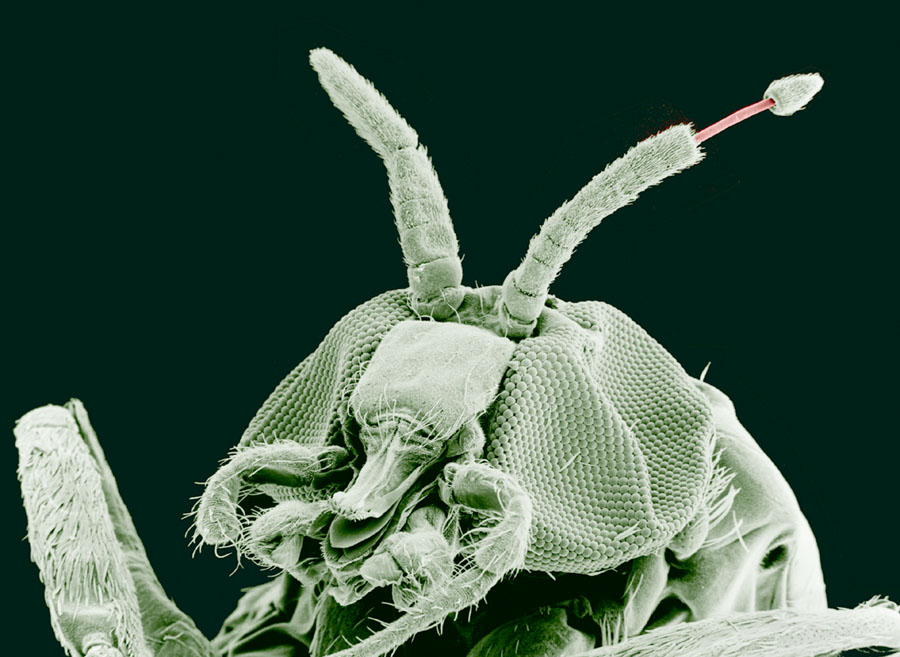- Black fly
Taxobox
name = Black fly

image_width = 200px
image_caption = "Simulium yahense "
regnum =Animal ia
phylum =Arthropod a
subphylum =Hexapoda
classis =Insect a
subclassis =Pterygota
infraclassis =Neoptera
superordo =Endopterygota |
ordo = Diptera
subordo =Nematocera
infraordo =Culicomorpha
superfamilia =Chironomoidea
familia = Simuliidae
subdivision_ranks = Subfamilies
subdivision =
*Parasimuliinae
*Simuliinae Genera
* "Araucnephia "
* "Araucnephioides "
* "Archicnephia "
* "Austrosimulium "
* "Baisomyia "
* "Cnephia "
* "Cnesia "
* "Cnesiamima "
* "Crozetia "
* "Ectemnia "
* "Gigantodax "
* "Greniera "
* "Gydarina "
* "Gymnopais "
* "Kovalevimyia "
* "Levitinia "
* "Lutzsimulium "
* "Mayacnephia "
* "Metacnephia "
* "Paracnephia "
* "Parasimulium "
* "Paraustrosimulium "
* "Pedrowygomyia "
* "Prosimulium "
* "Simuliites "
* "Simulimima "
* "Simulium "
* "Stegopterna "
* "Sulcicnephia "
* "Tlalocomyia "
* "Twinnia "A black fly (sometimes called a buffalo
gnat , turkey gnat or white socks) is any member of the family Simuliidae of theCulicomorpha infraorder . They are related to theCeratopogonidae ,Chironomidae , andThaumaleidae . There are over 1,800 known species of black flies (of which 11 are extinct). The majority of species belong to the immense genus "Simulium ". Likemosquito es, to which they are related, most black flies gain nourishment by sucking theblood of other animals, although the males feed mainly onnectar . They are usually small, black or gray, with short legs and antennae. They are a common nuisance for humans, and manyU.S. state s have programs to suppress the black fly population. They spread several diseases, includingriver blindness inAfrica ("Simulium damnosum" and "S. neavei") and theAmericas ("Simulium callidum" and "S. metallicum" inCentral America , also "S. ochraceum" in Central andSouth America ).Role in Human Disease
The black fly is central to the transmission of the
parasitic nematode "Onchocerca volvulus", which causesOnchocerciasis , also known asriver blindness . It serves as thelarval host for the nematode and acts as the vector by which the disease is spread. Transmission of the parasite occurs through the bite of a black fly when feeding on humanblood .Regional effects of black fly populations
* In the wetter parts of the northern latitudes of
North America , including parts ofCanada ,New England and theUpper Peninsula of Michigan , black fly populations swell from Mid-May to July, becoming a nuisance to humans engaging in common outdoor activitites such asboating ,camping and backpacking. They can also be a significant nuisance in mountainous areas.
* In Canada, black flies are a scourge to livestock, causing weight loss in cattle and in some cases, death. [The Canadian Encyclopedia: [http://www.thecanadianencyclopedia.com/index.cfm?PgNm=TCE&Params=A1ARTA0000798 Black Fly] ]
* TheCommonwealth of Pennsylvania , in theUnited States , operates the largest single black fly control program in North America. The program is seen as beneficial to both the quality of life for residents and to the state's tourism industry. [http://www.depweb.state.pa.us/blackfly]
* TheBlandford Fly ("Simulium posticatum") inEngland was once a public health problem in the area around Blandford Forum,Dorset , due to its large numbers and the painful lesions caused by its bite. It was eventually controlled by carefully targeted applications of "Bacillus thuringiensis israelensis ". [BBC h2g2: [http://www.bbc.co.uk/dna/h2g2/A6756519 The Blandford Fly] ]Ecology
Eggs are laid in running water, and the
larva e attach themselves to rocks. Breeding success is highly sensitive to water pollution. [cite news |first=Beth |last=Daley |title=Black flies surge in Maine's clean rivers |url=http://www.boston.com/news/science/articles/2008/06/23/black_flies_surge_in_maines_clean_rivers/ |publisher=Boston Globe |date=2008-06-23 |accessdate=2008-06-23] The larvae use tiny hooks at the end of the abdomen to hold on to the substrate, using silk holdfasts and threads to move or hold their place. They have foldable fans surrounding their mouths. When feeding, the fans expand, catching passing debris (small organic particles, algae and bacteria). Every few seconds, the larva scrapes the fan's catch into its mouth. Black flies depend onlotic habitats to bring food to them. They will pupate under water and then emerge in a bubble of air as flying adults. During emergence, they are often preyed upon by trout.As adults, males feed on nectar while females also feed on blood. Some species in Africa can range as far as 40 miles from aquatic breeding sites in search of their blood meals, while other species have more limited range. Different species prefer different host sources for their blood meal, which is sometimes reflected in the common name for the species. They feed in the daytime, preferably when wind speeds are low.
DEET based insect repellants may prove counter-productive and attract greater numbers of black flies;permethrin products designed forticks are effective but can only be applied to clothing, limiting their utility. [cite web |url=http://creatures.ifas.ufl.edu/livestock/bfly.htm |title=Black flies, "Simulium" spp. (Insecta: Diptera: Simuliidae) |accessdate=2008-07-16 |author= |last=Butler |first=J. F. |authorlink= |coauthors= |date=2007 |year= |month= |format= |work=Featured Creatures |publisher=University of Florida |pages= |language= |doi= |archiveurl= |archivedate= |quote= ]Black flies are
univoltine , which means that they spend the winter in the larval stage, often under the ice, where they slowly mature.The
Canadian Shield is characterized by an abundance of lakes and swift-flowing streams and hence offers optimum conditions for black flies to lay their eggs. The Canadian Shield is notorious for the abundance of black flies in the summertime.ee also
*"
Blackfly Season " (novel), byGiles Blunt
* "The Black Fly Song ", a song byWade Hemsworth inspired by his experiences with them
*Use of DNA in forensic entomology Notes
References
* [http://ohioline.osu.edu/hyg-fact/2000/2167.html Black Flies Fact Sheet] from
Ohio State University
* [http://blackfly.org.uk Extensive Simuliidae (black fly) Web pages at blackfly.org.uk]
* [http://www.nhm.ac.uk/research-curation/projects/blackflies/Inventory.pdf Black fly species inventory]
* [http://www.mainenature.org/blackfly/blackflyinfo.html FAQ about black flies in Maine]External links
* [http://www.blackflies.info Taxonomy and systematics of Simuliidae]
Wikimedia Foundation. 2010.
